8 UX & user research nightmares (plus some handy ideas and resources)
27th October 2020

The good thing about nightmares? You eventually wake up! It’s the same for user research and UX-related challenges: you will eventually find a solution for them, even if it takes some time. We went on a deep dive in Reddit to find some of the most popular issues UX designers and researchers are currently facing (and the useful suggestions shared).
👻 Adapting user research during COVID-19
This is still one of the more popular topics being discussed across the web and social media. Back at the beginning of the pandemic, we wrote this blog that you may still find useful.
Here are some of the suggestions we found to help with this 2020 nightmare:
+ Allow yourself enough time to figure out which video conferencing tool to use.
+ Have a fallback plans if you experience any internet issues. For example, if testing prototypes, PDF versions can sometimes replace the interactive ones.
+ Consider the ethics of your project within the current context.
+ Consider the constraints and challenges that participants are experiencing during this period as well.
👻 When users can’t/don’t want to make time to talk
+ Appeal to their altruism: “If you are working on the next best widget, empower you users to know they don’t have to settle for crappy equipment/software. Their feedback is valuable, and will help other service members down the line.”
+ “A cousin of this is to appeal to their ego – their sense of having good knowledge and good opinions.”
 + Provide a ‘when-is-good’ calendar with time slots so they can sign-up and give you multiple times in which they are available.
+ Provide a ‘when-is-good’ calendar with time slots so they can sign-up and give you multiple times in which they are available.
+ Build rapport with your participants – this might mean developing a panel you can use in the long-term –, continuously learn from your mistakes to improve your research questions and test them with other UX researchers.
+ Be straightforward and honest about your project.
+ Ask follow-up questions: “Can you elaborate on that? seem to be magic words, as well as asking What do you mean by…? You might have a participant that just isn’t helpful, but often I think participants want to help and aren’t sure how, so you have to coax them into speaking (but obviously avoid guiding them into answering a certain way).”
👻 Fighting for simple design decisions
+ “You need to question it and find out why they want that. What are they trying to accomplish by doing that? There’s probably an objective they have in their head that isn’t being voiced. Listen first; then try and figure out if the solution you’ve proposed does or doesn’t accomplish what they are trying to do. Clients are not your enemy. They need your help, but you also need their help to understand what they are trying to accomplish and all the restraints they have floating around in their head.”
+ Learn to compromise.
+ Provide examples on why some design elements are a bad idea.
👻 When people shut down during user interviews
+ Consider an unmoderated alternative method of collecting this data if people are too worried about being judged, for example.
+ Try using the ‘5 Whys’ technique (asking why? at the response you get five times in a row). “However, it is super important to subtly validate their answers before you probe further. Let them know how what they’re thinking and feeling is okay, that you aren’t judging them for whatever answers they give you. There’s another framework you can check out – 10 Conditions of Change, by Sparkwave. When looking to foster positive behaviours or create lasting behaviour change, their approach is really practical and simplified.”
+ Preface the research session with empathetic communication with the participants and ‘break the ice’ at the beginning of the interview to make them feel comfortable.
+ Make sure people know that the research session is a safe place, and regardless of their personal thoughts and experiences they won’t be judged.
+ Reiterate that you are looking for honest, open feedback to be able to learn more from them.
+ Reassure your participants that their data remains anonymous.
👻 Recruiting users according to complex criteria
+ This can be particularly challenging if you are trying to recruit participants that, for example, do a job you don’t know much about. It’s essential to do some research at the early stages of the recruitment to understand better who you are trying to find and how to successfully reach out to them.
+ If you can, try to engage with associations or entities that have access to your target group.
+ Make sure you incentivise accordingly: a CEO of a large company testing a complex financial tool will require a higher incentive than a student testing a music streaming app.
Here’s a blog that might help.

👻 Working on a complex product in a company with low UX maturity
+ It’s useful to first understand your organisation’s level of maturity: this blog is a good place to start.
+ “Low maturity UX roles are all about networking within the company to find champions that increase your ability to get a seat at the table and conducting generative research that allows UX designers to have a stronger voice with project managers.”
+ “Maturity aside, there is definitely a need for an enterprise view of UX for those organisations versus a start-up mentality. The sooner you can move towards DesignOps and ResearchOps, the better off you will be.”
👻 Obstacles to conducting more (or any) user research
+ “The problem is that sometimes research is more of a nice-to-have than a requirement, along with the challenges of navigating corporate hierarchies and gaining access to end users that can provide us feedback.”
+ “One of my biggest frustrations with how research is done today is the designers’ inability to tell when research is needed and the researchers’ inability to tell when the research they are doing is a waste of time.”
+ “The biggest pain point in UX research is dealing with other business people, especially supervisors and above. They don’t know much about usability and often don’t care. This ends up dictating both the quality and the frequency of UX/usability testing/research.”
+ “Poor planning, lack of time, heavy workload, and upper management pivoting.”
+ “Biggest pain points? Largely access to specialist participants. I don’t do very much with the public. Getting time from doctors, academics or exporters, etc. can be tough.”
+ “Having a small, green team that have to prioritise the solution cycle rather than running research efforts.”
👻 Identifying a user error vs. bad UX
+ “User error is determined by scale. An actual user error is an anomaly, a one-off. A pattern is evidence of a usability problem.”
+ “We’ like to think of ourselves as logical, rational and intelligent creates that do not make mistakes, but that just isn’t true. It’s not like we want to make mistakes, but we make mistakes all the time. We’re tired, we’re distracted, we’re in a hurry. We’re limited in our abilities so we slip, we misunderstand and we forget. People blame the user and not the design because they don’t understand human psychology. I would almost go as far as to say that there are no user errors, only bad design.”
![]() Maria Santos, Head of Digital Ops & Data Protection
Maria Santos, Head of Digital Ops & Data Protection
If you would like to find out more about our in-house participant recruitment service for user testing or market research get in touch on 0117 921 0008 or info@peopleforresearch.co.uk.
At People for Research, we recruit participants for UX and usability testing and market research. We work with award winning UX agencies across the UK and partner up with a number of end clients who are leading the way with in-house user experience and insight.



